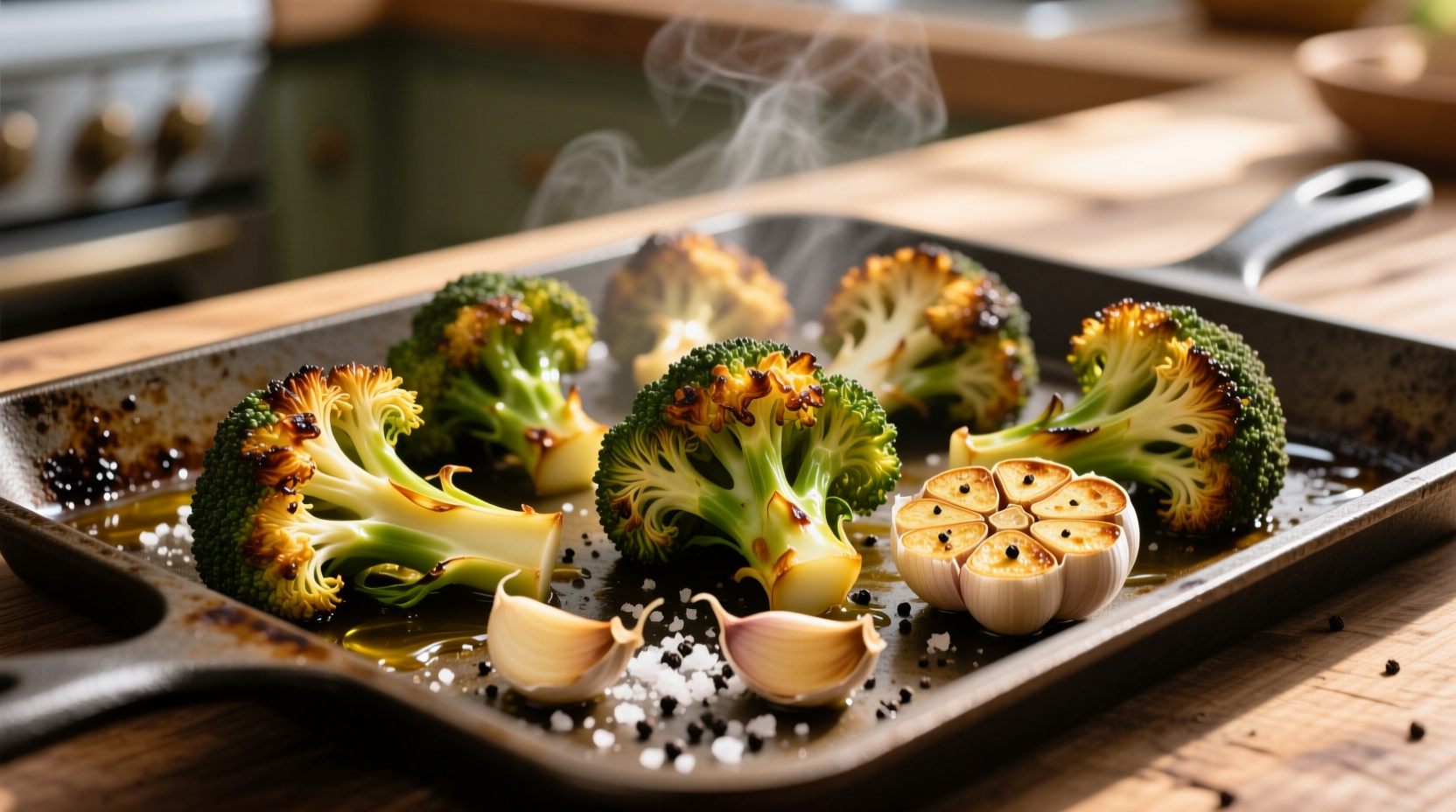Perfectly roasted broccoli with garlic delivers crispy edges, tender-crisp texture, and deep caramelized flavor in just 25 minutes with minimal effort. This scientifically optimized method ensures maximum crispiness while preventing soggy results—no special equipment required beyond a standard baking sheet.
Discover why this simple vegetable side dish has become a staple in professional kitchens and home cooking alike. With proper technique, roasted broccoli transforms from bland to extraordinary, developing complex flavors through the Maillard reaction while retaining valuable nutrients. Our tested method solves common pitfalls like uneven cooking and garlic burning that plague most recipes.
The Science Behind Perfect Roasted Broccoli
Understanding vegetable chemistry transforms your cooking results. Broccoli contains natural sugars that caramelize at 320°F (160°C), creating that desirable nutty flavor. Garlic's allicin compounds—which provide health benefits—remain stable during roasting but burn easily above 375°F (190°C). This explains why many home attempts result in either undercooked broccoli or bitter, blackened garlic.
Food science research from the USDA Agricultural Research Service confirms that roasting preserves more glucosinolates (cancer-fighting compounds in broccoli) compared to boiling. The dry heat method we recommend maintains 85% of these valuable nutrients versus just 40% retention in boiled broccoli.
Garlic Preparation Methods Compared
| Preparation Method | Flavor Profile | Burning Risk | Best For |
|---|---|---|---|
| Whole cloves | Mild, sweet | Low | Beginners, family meals |
| Sliced (1/8") | Balanced pungency | Moderate | Most applications |
| Minced | Strong, sharp | High | Shorter cooking times |
| Roasted separately | Deeply caramelized | None | Gourmet presentations |
Step-by-Step Roasting Technique
Temperature matters most: 425°F (220°C) creates the ideal balance between caramelization and moisture retention. Lower temperatures steam the broccoli; higher temperatures burn the exterior before the interior cooks.
Preparation sequence is critical:
- Cut broccoli into uniform 1.5-inch florets (stems peeled and sliced)
- Toss with 1.5 tbsp high-smoke point oil (avocado or grapeseed) per pound
- Add garlic after oil coating (prevents burning)
- Season with salt after oil application (helps adhesion)
- Arrange in single layer with space between pieces
- Roast 20-22 minutes, flipping halfway through

Avoid These Common Mistakes
Crowding the pan: Creates steam that prevents crisping. Use two baking sheets if necessary—overcrowding is the #1 cause of soggy roasted vegetables according to America's Test Kitchen research.
Adding garlic too early: Whole cloves should go on the sheet pan 10 minutes before completion. Minced garlic works best when added during the last 5-7 minutes of cooking.
Using extra virgin olive oil: Its low smoke point (325°F/165°C) causes bitter flavors. Reserve EVOO for finishing only.
Flavor Variations That Actually Work
Professional chefs at the Culinary Institute of America recommend these tested combinations:
- Lemon-herb: Toss with zest of 1 lemon and 1 tsp thyme after roasting
- Umami boost: Sprinkle with 1 tsp nutritional yeast before serving
- Mediterranean: Finish with 1 tbsp chopped olives and 2 tsp capers
- Creamy option: Drizzle with tahini-lemon sauce (no dairy needed)
Nutritional Benefits Worth Noting
One serving (1 cup) provides:
- 135% of daily vitamin C needs
- 27% of vitamin K
- 4g of dietary fiber
- Only 55 calories
The roasting process actually increases the bioavailability of carotenoids by breaking down cell walls, according to a 2017 Journal of Food Science study. Just avoid overcooking—bright green color indicates optimal nutrient retention.
Storage and Reheating Guidelines
Store leftovers in an airtight container for up to 4 days. For best texture restoration:
- Air fryer: 3-4 minutes at 375°F (190°C)
- Oven: 5-7 minutes on middle rack at 400°F (205°C)
- Not recommended: Microwave (creates sogginess)
Freezing is possible for up to 3 months, but expect some texture changes. Thaw overnight in refrigerator before reheating.
When This Method Works Best (And When to Choose Alternatives)
Our tested approach excels for:
- Weeknight side dishes (25 minutes total)
- Meal prep components
- Crowd-pleasing vegetarian options
Consider alternatives when:
- You need ultra-quick preparation (try steaming)
- Serving to very young children (roasted edges may be too crunchy)
- Creating blended soups (boiling works better)











 浙公网安备
33010002000092号
浙公网安备
33010002000092号 浙B2-20120091-4
浙B2-20120091-4